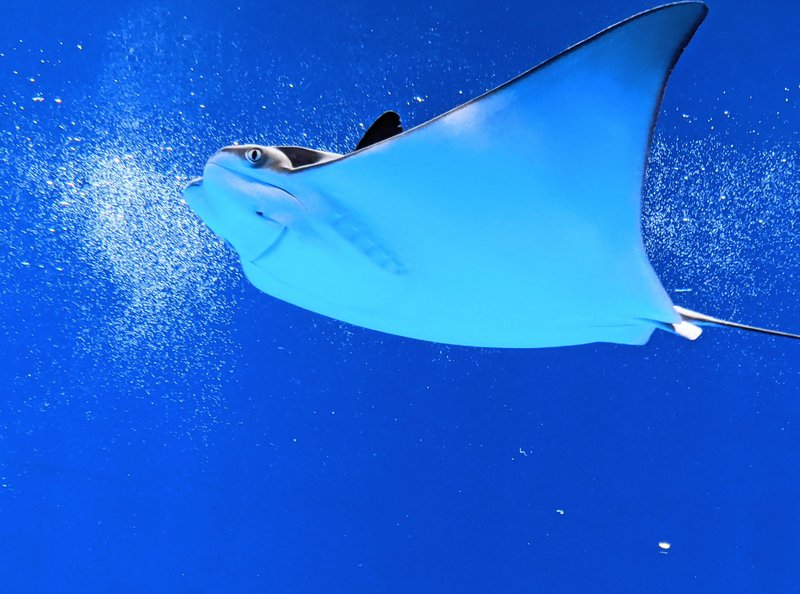
If you’ve ever encountered a stingray, you might have a few misconceptions. Some people might picture them as dangerous creatures, thanks to their sharp barbed tails. But honestly, there’s so much more to them than meets the eye. Let’s dive deeper and explore ten cool things about stingrays that you probably didn’t know!
1. Stingrays Are Related to Sharks
You might be surprised to learn that stingrays are cousins to sharks! They both belong to the class Chondrichthyes, which means their skeletons are made of cartilage, not bone. This shared family tree is intriguing because it shows just how diverse sea life can be.
The structure of stingrays is also fascinating. They have flattened bodies that help them camouflage perfectly against sandy ocean floors. This allows them to blend in and avoid predators, a clever tactic for survival. So, next time you see a stingray, remember, it’s not just a swimming pancake; it’s part of a larger family of fascinating creatures!
2. They Can Change Color
Stingrays have a cool ability to change their color to blend in with their environment. Like chameleons of the sea, they can shift their hues based on where they are. This is known as camouflage, and it plays a big role in their survival.
Picture this: a stingray resting on a sandy bottom can transform its appearance to match the light and shadows of its surroundings. This makes it less visible to both predators and prey. This natural trickery is one of the many reasons why they are such captivating creatures. You might be wondering how they do this—it’s all about specialized skin cells called chromatophores that expand or contract, allowing color and pattern changes.
3. Stingrays Have Unique Defense Mechanisms
While stingrays are generally pretty laid back, they do have ways to protect themselves. Most notably, they carry a venomous barb on their tails, but here’s the thing: they typically won’t use it unless they feel threatened. Think of it as their “last line of defense.”
When a stingray swims away from a perceived threat, it often buries itself in the sand to stay hidden. This impressive ability to conceal themselves makes them one of the ocean’s quieter types of guardians. It’s a gentle reminder that even the most unassuming creatures can have tricks up their sleeves!
4. They’re Gentle Giants
Despite their sharp barbs, most stingrays are gentle and prefer to avoid confrontation. Many species, like the Southern stingray or the Atlantic stingray, are known for their docile nature. They can often be found gliding gracefully through their habitats, feasting on small fish, crustaceans, and mollusks.
In fact, divers often report positive interactions with stingrays. There are places in the world where you can safely swim with these creatures, and they may even approach you! It’s important to treat them with respect, but if you’re ever lucky enough to get close, you’ll see their sweet and curious side.
5. They Can Live A Long Time
Stingrays have impressive lifespans, with many living between 15 to 25 years in the wild. That’s a long time to be cruising the ocean! Some species, like the spotted eagle ray, can even live longer under the right conditions.
A long life in the ocean means they have plenty of time to adapt to changes in their environment. Just think about it: these creatures witness shifts in ocean temperatures, food availability, and predators throughout their lives. Their resilience is a testament to their evolutionary success!
6. Stingrays Are Great for the Ecosystem
Stingrays play an essential role in maintaining the health of our oceans. By feeding on benthic prey like crustaceans and mollusks, they help keep these populations in check. This balance is crucial, as it prevents overpopulation and contributes to the overall health of marine ecosystems.
You might be surprised to learn that their feeding habits also help aerate the ocean floor. As they dig through the sand to find their meals, they stir up the sediment, which can help promote a healthy ecosystem. It’s like they’re little gardeners of the sea!
7. They Have Specialized Mouths
Have you ever wondered how stingrays eat? They have a unique way of feeding. Instead of a typical jaw, stingrays possess a specialized mouth on the underside of their bodies. This design allows them to suck in prey like they’re using a vacuum.
When a stingray spots food, it can open its mouth and create suction, pulling in whatever tasty morsels are nearby. This feeding style is not only efficient but also reduces the chances of alerting nearby predators. It’s a clever adaptation that allows them to enjoy their meals in peace.
8. Some Stingrays Can Jump!
Stingrays are more agile than you might think. Some species, like the giant manta ray, can leap out of the water. It’s a sight to behold! They can soar several feet in the air, twisting and turning before splashing back down.
No one is completely sure why they jump, but it’s believed to be a way to shake off parasites or just a playful display. Imagine seeing a stingray bursting from the water like a graceful dancer—it’s both surprising and captivating!
9. They Communicate Through Body Language
Stingrays may not have voices like we do, but they have their own ways of communicating. They use body language to express their feelings. For example, if a stingray feels threatened, it may arch its back or puff itself up to appear larger.
Moreover, when they’re relaxed or socializing, you might notice gentle movements and displays of curiosity. This silent communication is vital for their interactions with other stingrays and helps them navigate their complex social lives.
10. There Are Many Species of Stingrays
Did you know there are over 70 different species of stingrays? Each has its unique traits and characteristics. Some are well-known, like the spotted eagle ray, while others are lesser-known but equally fascinating.
For instance, the freshwater stingray is an entirely different beast found in rivers and lakes rather than oceans. These variations among species showcase just how diverse and adaptable stingrays can be, thriving in various environments around the globe.
In conclusion, stingrays are remarkable creatures with unique features and behaviors that are often overlooked. They blend beauty, functionality, and adaptability in their environments, making them worthy of our attention. So next time you think about the ocean’s inhabitants, remember the stingray’s quiet grace and the cool facts that surround them. They truly are the ocean’s secret gems!

